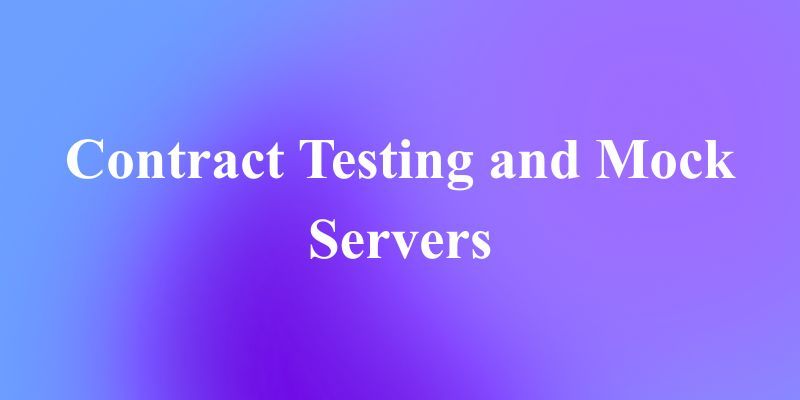Testing is an essential part of the development process, ensuring that applications perform as expected. However, encountering failed tests is inevitable in any testing environment. Understanding how to handle these failures is crucial for maintaining the integrity of your application and improving your testing process. This comprehensive guide provides ten essential tips on what to do when your test fails, helping you manage and correct these issues efficiently.
What Happens When a Test Fails
When a test fails, your first reaction might be frustration or concern. However, failed tests should be viewed as valuable feedback that can help improve your application. Before diving into the specific steps to handle a failed test, it's important to understand the common causes of test failures:
- Code Changes: Recent modifications in the code may cause certain test cases to fail. This often happens when new features are implemented without considering their impact on existing functionality.
- Test Script Errors: Errors within the test script itself, such as syntax errors or incorrect logic, can lead to failures even when the application is working correctly.
- Environment Issues: Problems with the test environment, including incorrect configurations or network issues, can cause tests to fail unexpectedly.
- Data Issues: Incorrect or missing test data can lead to failures that don't actually reflect problems with the application's functionality.
- UI Changes: Updates to the user interface, such as changed element IDs or modified CSS selectors, can break UI tests that rely on specific element identifiers.
Now, let's explore the ten essential tips for handling test failures effectively.
Tip 1: Review the Test Failure Thoroughly
When a test fails, carefully review the failure message and associated logs. Look for specific error messages or stack traces that can provide clues about what went wrong. For automated tests, examine any screenshots or recordings captured at the time of failure.
A thorough review should include:
- Understanding the exact point of failure
- Identifying any error codes or exception messages
- Reviewing the expected versus actual results
- Examining the test logs for additional context
This initial analysis provides the foundation for your troubleshooting efforts.
Tip 2: Reproduce the Failure Manually
After reviewing the failure information, try to reproduce the issue manually by following the steps outlined in the test case. This helps confirm whether the issue is with the test case itself or with the application under test.
Manual reproduction can reveal:
- If the application truly has a defect
- If the test expectations are realistic
- If the test conditions are correctly set up
- Whether the failure is consistent or intermittent
This step helps you distinguish between actual bugs and false positives in your test results.
Tip 3: Check for Recent Changes
Many test failures occur after recent changes to code, configurations, or dependencies. Review recent commits, pull requests, or deployments that might have affected the functionality being tested.
Consider investigating:
- Code changes in the specific module being tested
- Updates to shared libraries or dependencies
- Configuration changes to the environment
- Database schema modifications
- API changes that might impact the functionality
Version control systems make it easier to track down when and where changes were introduced that could have caused the failure.
Tip 4: Analyze the Test Script
Sometimes the issue lies within the test script itself. Analyze the code to ensure there are no errors or incorrect assumptions in your test logic.
Look for:
- Syntax errors or typos
- Incorrect assertions or validations
- Improper test setup or teardown procedures
- Race conditions or timing issues
- Hardcoded values that might have changed
Well-structured tests are easier to debug, so consider whether your test design could be improved for better maintainability.
Tip 5: Verify the Test Environment
Environmental issues are common culprits for test failures. Ensure that your test environment is set up correctly and that all required resources are available.
Check for:
- Proper configuration of environments (development, staging, etc.)
- Network connectivity issues
- Required services being available and accessible
- Correct database state and data availability
- Browser compatibility issues (for web applications)
An unstable or incorrectly configured environment can cause intermittent test failures that are difficult to diagnose.
Tip 6: Update the Test Case
If the application has legitimately changed, you may need to update your test case to align with the new functionality or interface. This is a normal part of test maintenance as applications evolve.
Updates might include:
- Modifying element locators if UI elements have changed
- Adjusting expected results to match new behavior
- Updating test data to comply with new validation rules
- Revising test steps to accommodate workflow changes
- Adjusting timeouts for operations that now take different amounts of time
Remember that tests need to evolve alongside the application they're testing.
Tip 7: Rerun the Test
After making the necessary changes or fixes, rerun the test to verify that it now passes. If the test continues to fail, gather more information and repeat the troubleshooting process.
Consider:
- Running the test multiple times to check for consistency
- Running related tests to see if they're also affected
- Testing in different environments to identify environment-specific issues
- Isolating the test from others to eliminate interference
Persistent failures may require deeper investigation or consultation with developers or domain experts.
Tip 8: Use Clear and Descriptive Test Cases
To simplify troubleshooting future failures, ensure that your test cases are clear and descriptive. Well-documented tests make it easier to understand what's being tested and what the expected outcomes should be.
Best practices include:
- Writing descriptive test names that explain what's being tested
- Including detailed comments in test code
- Documenting preconditions and test data requirements
- Clearly stating expected outcomes
- Organizing tests logically by feature or functionality
This documentation pays dividends when troubleshooting becomes necessary.
Tip 9: Monitor and Log Test Runs
Implement comprehensive logging and monitoring for your test runs. Having detailed records helps track patterns of failures and provides valuable context for troubleshooting.
Effective monitoring includes:
- Capturing screenshots or videos at the time of failure
- Logging system states and relevant application data
- Recording timing information for performance-related issues
- Tracking test outcomes over time to identify trends
- Maintaining a history of test runs for comparison
Modern test automation frameworks and platforms provide these capabilities to streamline the debugging process.
Tip 10: Collaborate and Communicate
When dealing with complex test failures, collaboration is key. Engage with developers, other testers, and stakeholders to leverage collective expertise in resolving issues.
Effective collaboration strategies include:
- Documenting findings clearly for others to understand
- Sharing reproducible test cases that demonstrate the issue
- Discussing potential causes and solutions in team meetings
- Using issue tracking systems to monitor progress
- Establishing clear communication channels for testing-related discussions
A collaborative approach often leads to faster resolution and better long-term solutions.
Additional Best Practices for Handling Test Failures
Beyond the ten core tips, several best practices can enhance your approach to handling test failures:
Automate Where Possible
Automate repetitive testing tasks to reduce manual effort and increase test coverage. Automated tests can run more frequently, catching issues earlier in the development process.
Implement Continuous Integration
Integrate your tests into a continuous integration (CI) pipeline. This ensures that tests are run automatically with every code change, helping to catch issues early before they propagate to later stages of development.
Maintain a Stable Test Environment
Invest in creating and maintaining stable test environments that closely mirror production conditions. Containerization technologies like Docker can help create consistent, isolated environments for testing.
Regularly Update Test Cases
Schedule regular reviews and updates of your test cases to ensure they remain relevant as the application evolves. Remove outdated tests and add new ones to maintain comprehensive coverage.
Conclusion
Handling failed tests efficiently is a critical skill for maintaining software quality. By following these ten tips—reviewing failures thoroughly, reproducing issues manually, checking for recent changes, analyzing test scripts, verifying environments, updating test cases, rerunning tests, using clear documentation, monitoring test runs, and collaborating effectively—you can transform test failures from frustrations into valuable opportunities for improvement.
Remember that test failures are not just obstacles to overcome; they're valuable feedback mechanisms that help ensure your application meets quality standards. By developing a systematic approach to handling test failures, you can enhance the efficiency of your testing process and contribute to the overall quality of your software products.
With practice and experience, you'll become more adept at quickly identifying the root causes of test failures and implementing effective solutions, ultimately leading to more robust applications and more efficient development processes. Happy testing!



